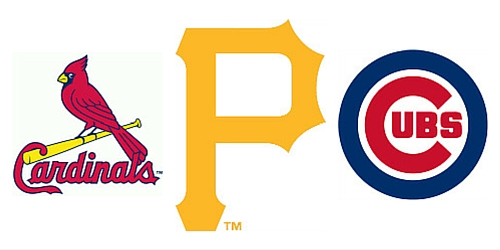Pennant fever and a different test of Pittsburgh, St. Louis and Chicago
Pittsburgh, St. Louis and Chicago rewrote baseball history Sunday. The National League Central Division rivals ended the season with the three best records in the major leagues – the first time in 146 years of professional baseball that one division claimed the game’s top three teams.
But how do these best-in-baseball cities compare off the field? Pittsburgh Today looked at a dozen economic and quality of life indicators in each region. Unlike baseball, we don’t have to wait for the postseason to run its course to declare a winner.
It’s Pittsburgh.
The indicators we chose include unemployment, job growth, housing appreciation, cost of living, cost of attending a ballgame, major crimes, high school and college graduates, traffic congestion and obesity rates. The results have all of the suspense of a 10-run lead with two outs in the ninth: The Pittsburgh Metropolitan Statistical Area tops St. Louis and Chicago in 8 of the 12 measures.
Money ball
Unless you’re drawing a major league paycheck, the cost of spending an afternoon or evening at the ballpark is likely an issue to consider. Here, Pittsburgh shines.
At PNC Park, a family of four can take in a game from average-priced seats, buy two small draft beers, four small soft drinks and four regular hot dogs, park the car and get the kids two of the cheapest baseball caps sold at the concession stand all for $175.95, according to Major League Baseball’s most recent Fan Cost Index.
That’s less expensive than the $211.66 major league average. It’s well below the $236.81 it costs to eat, drink and watch the Cardinals play in St. Louis. And it’s a downright bargain over Chicago, where the same package to see the Cubs at Wrigley Field will set you back $300.73.
At those prices it helps having a job. That’s more likely in Pittsburgh, where the 2014 annual jobless rate of 5.6 percent was the lowest of the rival regions. Pittsburgh’s monthly not seasonally adjusted unemployment rate in August was 5.5 percent, also a tad lower than its divisional rivals.
Chicago scores when a longer view of job growth is taken. Jobs grew 7.5 percent there over the past five years, besting second-place Pittsburgh’s 5 percent increase. And despite relatively high ballpark prices, St. Louis boasts the lowest overall cost-of-living, followed by Pittsburgh and much-more-expensive Chicago.
Home field advantage
Pittsburgh, again, is the star when housing prices trends are considered. Housing markets bubble and burst, but not in Pittsburgh. Think of the region as the kind of hitter who lacks home run power but is a steady bat in the lineup season after season.
Pittsburgh housing prices rose 14.5 percent in the past five years, crushing the competition. Over 10 years, Pittsburgh housing prices rose 21.5 percent while homeowners lost value in the Chicago and St. Louis markets.
Extra innings
Whether they’re heading to the ballpark or going to work, motorists waste more time sitting in traffic in Chicago and St. Louis than in Pittsburgh. By the Texas A&M Transportation Institute’s latest estimates, traffic delays result in Pittsburgh area motorists spending an additional 39 hours on the road each year, on average. In St. Louis, traffic delays cost motorist 43 hours. In Chicago, it’s more than 60.
Safe at home
Few metro regions have lower crime rates than Pittsburgh, and St. Louis and Chicago are not exceptions. In Pittsburgh, the FBI reports 2,149.3 major crimes are committed per 100,000 people. In St. Louis, it’s 3,101.8; in Chicago, 2,513. Pittsburgh also has the lowest murder, burglary, rape, theft and car theft rates.
Students of the game
A little education – math, in particular – goes a long way toward appreciating baseball’s finer points. The highest rate of high school graduates is found in Pittsburgh, where 35 percent of residents have a diploma. But only 31.7 percent have a college degree, ranking it third and well behind the leader in this measure, Chicago, where 36 percent hold a bachelor’s degree or higher.
Popcorn, peanuts, Cracker Jacks
Finally, it’s worth noting that Pittsburgh is the least obese of the NL Central Division rivals with 26.9 percent of residents carrying a body mass index of 30 or higher. Still, that’s more than of a quarter of the population and reason to suggest that fans rethink the jumbo hot dog and cheesy nachos the next time they visit the ballpark.
Bragging rights
If you want to let your friends in St. Louis and Chicago know who’s on top, feel free to send the link to this page: share this article.
Sources:
Bureau of Labor Statistics
U.S. Census Bureau
Fan Cost Index, Major League Baseball Team Marketing Report, April 2015
Federal Housing Finance Agency
Texas A&M Transportation Institute’s 2015 Urban Mobility Scorecard
FBI Uniform Crime Reports
Centers for Disease Control and Prevention
Council for Community and Economic Research





